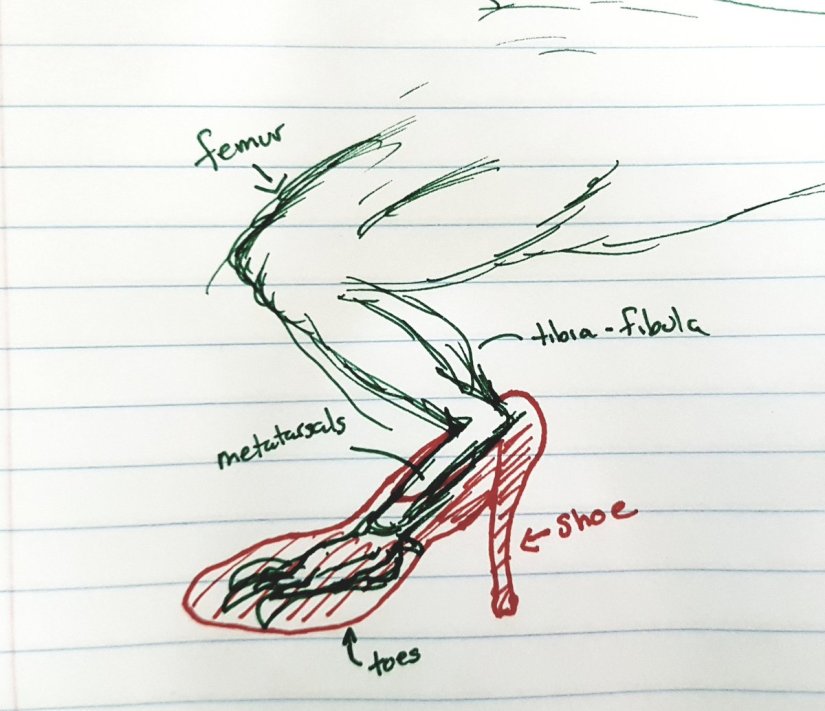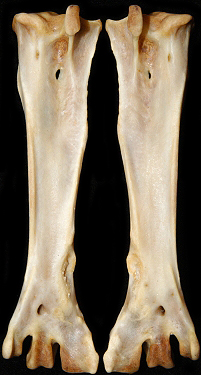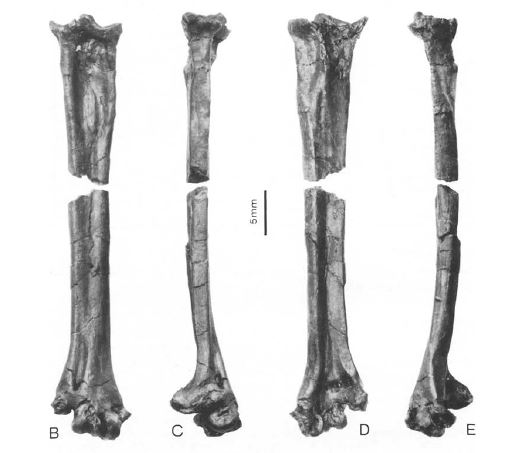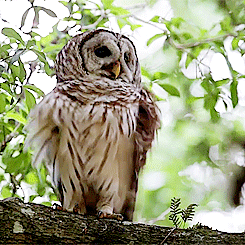Hello Dear Readers!
Live nest cam season is here (and sadly it is now past: too many major life changes happened that put this blog post on hold)! Nest cams are windows into the wonderful world of a very important time in the lives of our present-day theropods: mate interactions, nesting, brooding, and raising young.
Besides being completely fascinating, watching owls (and hawks, and osprey, and albatross) nest and raise young is that we know that Cretaceous theropods also courted their mates (1), constructed nests, laid eggs, and cared for their young. Here’s a link to an earlier blog post where I cover theropod nesting, brooding, and determining the sex of a theropod: http://birdsinmud.blogspot.com/2017/04/theropods-or-tender-pods-softer-side-of.html There is a lot that we can learn about the lives of extinct theropods by studying our present day theropods!
Other than the previous blog post on the tender side of theropods where I link to owl nest cams I realized, while watching the Barred Owl snooze in her next box, that I have never written about owls as their own topic.

So let’s talk about owls! I want to do a series of blog posts that highlight all that is fascinating about owls – I find everything about owls fascinating, so who knows how many posts this will be!
To start our conversation about owls we have to start at the beginning, which means we’ll be looking at the fossil history of owls!
Owl Features…In Bones
To talk about owls we have to talk about what features make owls what they are. If we don’t know what makes an owl an owl, we can’t figure out when owls first evolved. I’m only going to talk about owls as we recognize them from their skeletons because that’s what we have to work with as palaeontologists.
Owls belong to an order of birds called Strigiformes. This term was first coined by Wagler in 1830. To get into Club Strigiformes, you’d have to have the following characteristics:
- Large, round, front-facing eyes (can fossilize),
- Bony ring in the eye socket (sclerotic ring) is a solid, elongate tube (can fossilize),
- Eyes in a circular or heart-shaped disk of radiating feathers (not skeletal),
- Relatively large head (can fossilize),
- Holes in the neck vertebrae where the arteries run through are about 10X the size of the artery (can fossilize),
- Sharply hooked beaks (can fossilize, but shared with other birds of prey),
- Hooked talons (can fossilize, but shared with other birds of prey), and
- Feathers with serrated edges to reduce noise in flight (not skeletal).
Those are very general characteristics of an owl’s body. When we get down to the nitty-gritty of “How do I know my fossil bird is an owl?” we are dealing with parts of a bird skeleton that are more likely to fossilize than others. Skulls, with their thin braincases and thin bony struts, may not fossilize well (but it does happen). Bones that are relatively more sturdy, typically limb bones, have a better chance at fossilizing. This is why many of the oldest owl fossils are just that: limb bones or parts of limb bones. The most common limb bone of fossilized early owls that shows up in the scientific literature is one of my favorite bones, the tarsometatarsus.

If you picture a bird leg, you are probably familiar with the “backward knee” look that they have. That “backward knee” isn’t the knee at all: that’s the equivalent of our angle joint between the tibiotarsus and the tarsometatarsus. Remember those “if dogs wore pants” memes that circulated a few years ago? Well, if birds (and extinct theropod dinosaurs) wore shoes, they would look something like this:

The tarsometatarsus is one of my favorite bones in a bird skeleton because there’s a lot of identifying information in the area where the tarsometatarsus connects to the tibia and where the toes connect to the tarsometatarsus. I focused on the tarsometatarsus of shorebirds for my doctoral thesis because I wanted to understand the link between footprint shape and foot bones. [Results in progress.]
One of the obvious features of a bird of prey tarsometatarsus is the huge roller surfaces of the distal end – where the toes attach. Birds of prey are a lot like their extinct meat-eating dinosaur cousins: they do a lot of their prey catching with their feet. Those toes gotta be able to grip it good, so the roller surfaces are nice and robust. Check out the tarsometatarsus of a Bald Eagle.

Now, check out the tarsometatarus of a Great Horned Owl! Do you see the one roller surface – the outer roller – that is twisted?

This is a bony feature of a special owl foot trait, called the zygodactyl foot. Check out the feet of the Eurasian Eagle Owl coming in for a landing. Do you see how the outer toe is facing more backward than forwards? That’s a zygodactyl owl foot.

Even long-legged owls like the Burrowing Owl have a fourth/outer roller surface that is twisted!


One feature that diurnal (active in the daytime) predatory birds have is a built-in sun-visor over each eye. This sun-visor is called the supraorbital process. In diurnal birds this ridge can be very pronounced, but in nocturnal birds this visor is smaller. In diurnal owls (Great Horned Owls are an example) the ridge is well-developed!

In the Boreal Owl skull, we don’t see that bony sun visor: the edge of the upper eye socket is rounded and smooth. But check out those asymmetrical ear openings! This feature allows sound to come into the owl’s ears at two different levels, giving the owl precision targeting of small furry/feathery/fluttery prey. If you’re hunting at night, you need to pull out all the tricks to get a tasty meal!

These are two out of MANY features that make an owl an owl if all you find is the skeleton. That’s what we deal with when we talk about fossil owls.
Fossil Record of Owls: The Wise Oldest Owl
You might find this surprising, but owls have been around for a long time! We don’t yet have any definite owls from the Cretaceous Period, but in the time immediately after the Cretaceous – Paleogene extinction (when non-birdy dinosaurs went extinct 66 million years ago) owls are there! This suggests that owls – or very early versions of owls – may have evolved in the latest Cretaceous Period (2). Why is this? It’s because the “owly” features are fairly well-developed, and bony features take time to evolve in groups of animals.
That’s not to say that people haven’t thought they had evidence of Cretaceous owls. Bradycneme draculae (3) was described by Harrison and Walker in 1975 from the Maastrichtian (70 – 66 million years ago) age deposits of Transylvania (yes, they went there.) Following the description of Bradycneme as a Cretaceous owl, many researchers started to compare the end of the tibia (that’s the shin bone) to bones of theropod dinosaurs. It is very likely that Bradycneme is actually a funky little theropod called an alvarezsaurid (4).
Here’s an image of Patagonychus, an alvarezsaurid. Check out the wee little arms!

Our first Wise Oldest Owl comes from the lower Paleocene deposits of Colorado, USA (Tiffanian: 60.2 – 56.8 million years ago). Ogygoptynx wetmorei is known as a “protostrigid:” it’s really really close to being an owl it’s scary, and it has features that are seen in both typical owls (like Great Horned Owls) and the Barn Owl kind of owl. Ogygoptynx is known from a tarsometatarsus (5).

Our next Wise Oldest Owl is Berruornis, which comes from the upper Paleocene deposits (59 – 56 million years ago) of the Reims area of northeast France. Berruornis is known from – surprise! – a nice sturdy tarsometatarsus! One of the owly features of Berruornis is seeing the fourth distal tarsometatarsus – the roller surface – starting to get that zygodactyl twist! Berruornis fossils are also found from the Late Paleocene rocks in Germany.

This kickstarts my blog series on OWLS! The next post will focus on one fossil owl in particular…and this owl has some interesting mythological connections! Stay tuned!
References
1. Lockley MG, McCrea RT, Buckley LG, Lim JD, Matthews NA, Houck KJ, Gierliński GD, Surmik D, Kim KS, Xing L, Kong DY, Cart K, Martin J, Hadden G. 2016. Theropod courtship: large scale physical evidence of display arenas and avian-like scrape ceremony behavior by Cretaceous dinosaurs. Scientific Reports 6, Article number: 18952 (2016)
2. Harrison CJO, Walker CA. 1975. The Bradycnemidae, a new family of owls from the Upper Cretaceous of Romania. Palaeontology 18(3): 563-570.
3. Naish D, Gareth J. 2004. Heptasteornis was no ornithomimid, troodontid, dromaeosaurid or owl: the first alvarezsaurid (Dinosauria: Theropoda) from Europe. Neues Jahrbuch für Geologie und Paläontologie Monatshefte 7: 385-401.
4. Kurochin EN, Dyke GJ. 2011. The first fossil owls (Aves: Strigiformes) from the Paleogene of Asia and a review of the fossil record of Strigiformes. Paleontological Journal 45(4): 445-458.
5. Vickers-Rich P, Bohaska DJ. 1981. The Ogygoptyngidae, a new family of owls from the Paleocene of North America. Alcheringa 5(2): 95-102.
6. Mourer-Chauvire C. 1994. A large owl from the Palaeocene of France. Palaeontology 37: 339-348.


